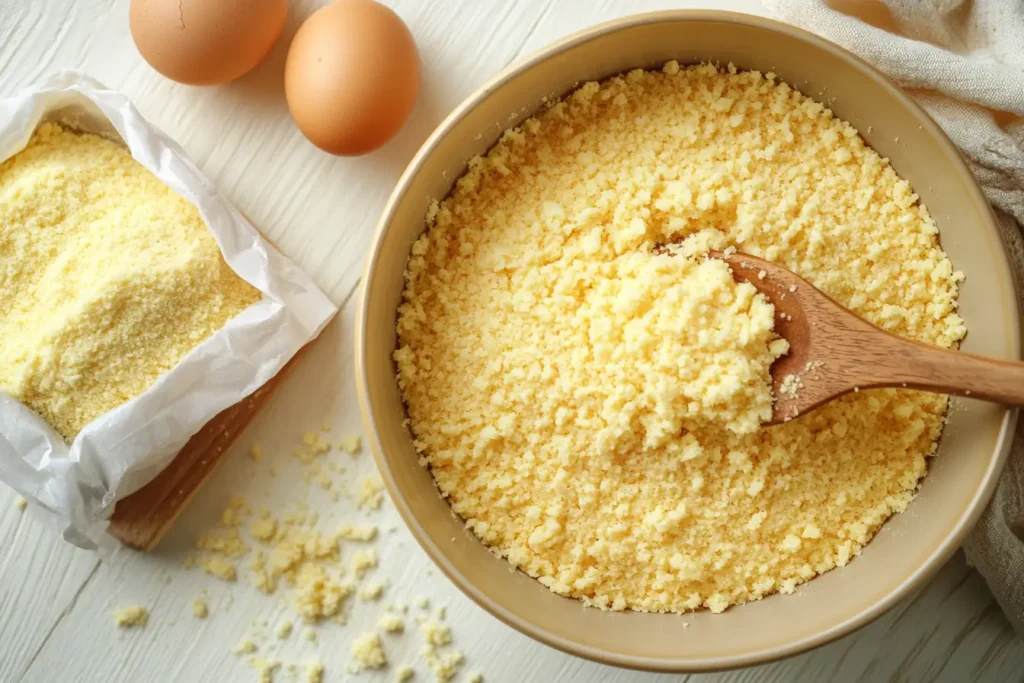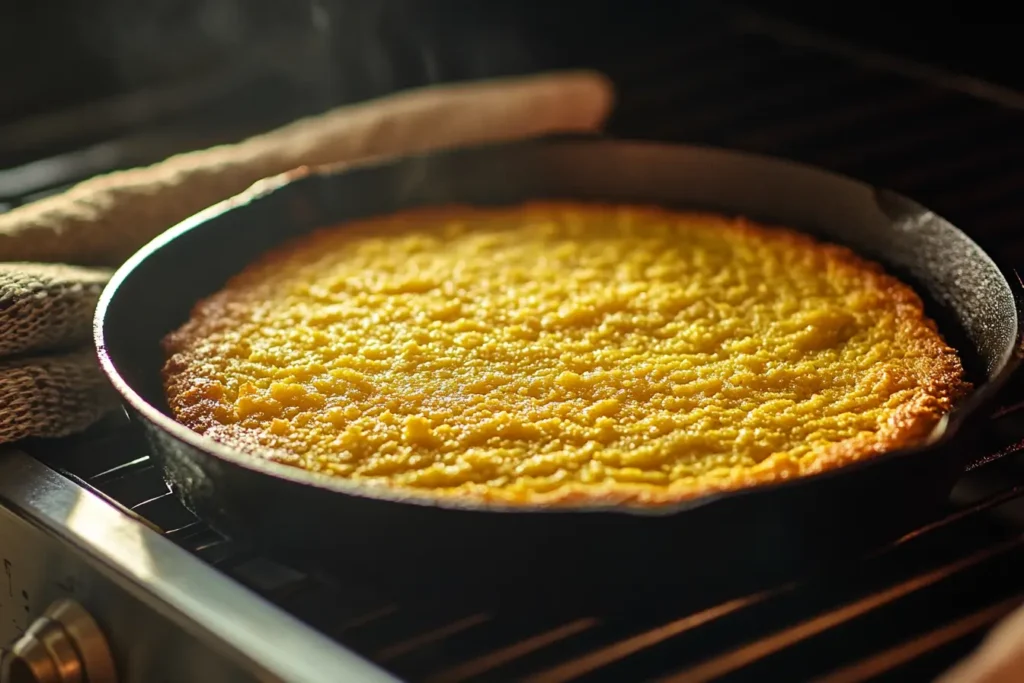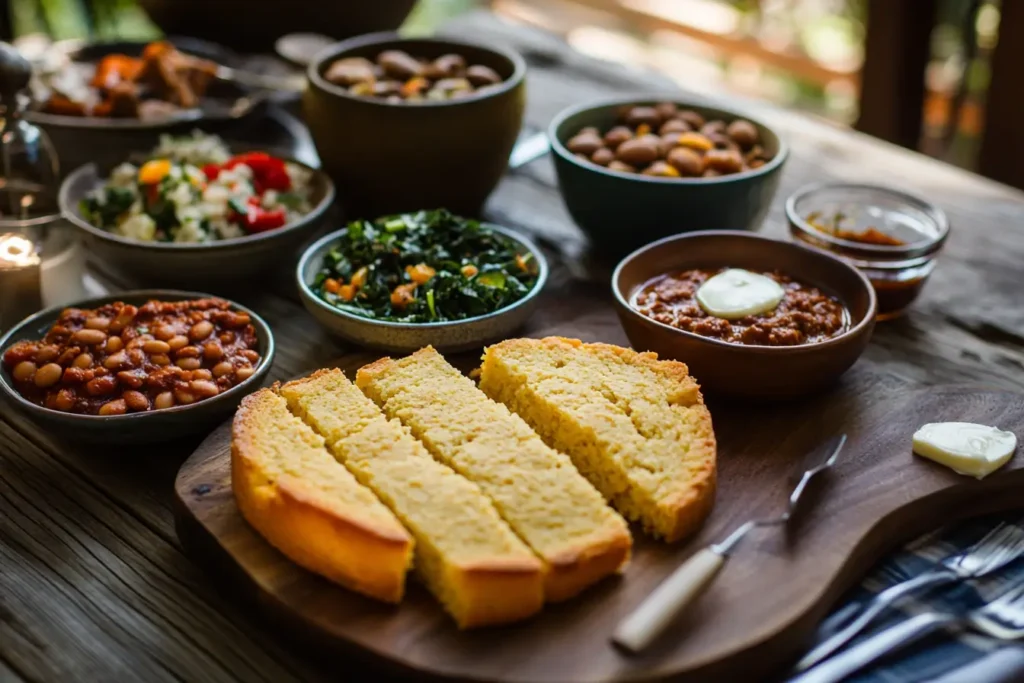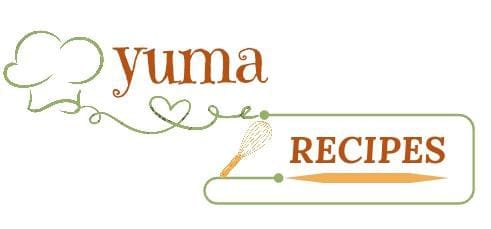Cornbread is more than just a simple side dish in the South—it’s a symbol of tradition, family, and the comfort of home-cooked meals. Whether served alongside a warm bowl of chili or as part of a holiday spread, a good Southern cornbread recipe brings people together. At YUMA Recipes, we love making cooking approachable, and this recipe embodies everything that makes Southern food special: simplicity, flavor, and a connection to its roots. With this guide, you’ll learn how to make the best Southern-style cornbread—crispy on the outside, tender on the inside, and utterly irresistible.
If you’ve been on the fence about whether cornbread should be sweet or savory, you’re not alone. The North-South debate over cornbread is legendary, but we’re here to show you why traditional Southern skillet cornbread, made without sugar, stands out as a savory classic. Get ready to whip up a real Southern cornbread that will take your breakfast table or dinner spread to the next level.
Table of Contents
The History of Southern Cornbread Recipe
The origins of Southern-style cornbread are deeply tied to the culinary traditions of Native Americans, who introduced early settlers to ground cornmeal as a staple ingredient. Over time, this humble bread evolved into a cornerstone of Southern cuisine. While Northern cornbread recipes lean towards sweetness, Southern cornbread reflects the region’s agricultural roots, focusing on simple, savory flavors.
A key difference lies in the texture and taste. While Northern versions are more cake-like due to sugar and extra flour, traditional Southern cornbread uses minimal flour and no sugar, resulting in a crumbly yet moist bread. This savory approach makes it a perfect companion to hearty dishes like chili, greens, or pinto beans. And let’s not forget the importance of the cast iron skillet cornbread, which creates the signature crispy crust.
The skillet, too, has historical significance. Passed down through generations, it symbolizes the resourcefulness of Southern cooks who used what they had to create meals full of flavor. Cooking in cast iron remains essential to achieving that perfectly golden, crispy crust.
Key Ingredients for Authentic Southern Cornbread
The beauty of a Southern cornbread recipe is its simplicity. Each ingredient plays a crucial role, and when combined, they create a harmony of flavor and texture that’s unmistakably Southern.
Cornmeal: The Star of the Show
The cornerstone of any authentic cornbread recipe is high-quality cornmeal.
- Stone-Ground Cornmeal: This type adds a rustic texture and rich flavor, making it a favorite for many.
- Yellow vs. White Cornmeal: Yellow cornmeal has a slightly sweeter, nuttier taste, while white cornmeal is more neutral. Both work, but yellow cornmeal is more commonly associated with Southern comfort food recipes.
- Self-Rising Cornmeal: For beginners, self-rising cornmeal simplifies the process, as it already contains leavening agents.
Buttermilk for Tang and Texture
No Southern cornbread recipe is complete without buttermilk. It not only gives the bread a subtle tangy flavor but also helps achieve a tender crumb by reacting with baking soda for leavening. If you’re out of buttermilk, don’t worry—you can make a quick substitute by adding a tablespoon of vinegar or lemon juice to a cup of regular milk.
Fat for Flavor
The choice of fat in your recipe can transform the final product. For a traditional flavor, bacon grease is the gold standard. It adds a smoky, savory depth that’s hard to beat. Butter, on the other hand, brings richness and a hint of sweetness. If you prefer something neutral, vegetable oil works as well.
Other Essentials
While cornmeal is the star, a small amount of all-purpose flour provides structure. Baking soda and baking powder help the bread rise, while salt enhances all the flavors. Some cooks even add an egg for a slightly denser texture, making the bread more versatile for pairing with different dishes.
Essential Tools for Southern Skillet Cornbread
When it comes to Southern-style cornbread, your tools can make or break the recipe. Chief among them is the cast iron skillet. A well-seasoned skillet not only creates that iconic crispy crust but also evenly distributes heat, ensuring consistent results every time. Here’s why it’s indispensable:
- Crispy Crust: The hot skillet gives the cornbread a beautifully caramelized edge.
- Even Heating: Cast iron retains and distributes heat better than most materials.
- Durability: With proper care, a cast iron skillet can last for generations.
If you don’t have a cast iron skillet, you can use an oven-safe pan. However, the texture and crust won’t be quite the same. For those new to cast iron cooking, don’t miss our Ultimate Cornbread Recipes Collection for tips on seasoning and maintenance.
How to Prepare the Perfect Southern Cornbread Recipe Batter

Making the perfect batter is where the magic happens. Follow these steps, and you’ll be on your way to cornbread perfection.
Mixing the Dry Ingredients
Start with the essentials:
- 2 cups of stone-ground cornmeal
- ½ cup of all-purpose flour
- 1 teaspoon of baking powder
- ½ teaspoon of baking soda
- A pinch of salt
Combining the Wet Ingredients for a Perfect Southern Cornbread Recipe Batter
In another bowl, whisk together:
- 2 large eggs
- 1¾ cups of buttermilk
- 2 tablespoons of melted bacon grease or butter
Bringing It Together
Gradually add the wet ingredients to the dry mixture, stirring gently until everything is combined. Ideally, the batter should be slightly thicker than pancake batter but not overly stiff, as this ensures the right texture for your cornbread. However, be careful not to overmix the batter, as doing so can make the cornbread dense and less enjoyable. Additionally, remember to scrape the sides of the bowl to incorporate all the ingredients evenly. By mixing with care, you’ll achieve a consistency that guarantees a perfectly moist and crumbly cornbread.
Cooking Techniques for Southern-Style Cornbread with a Crispy Crust

Now that your batter is ready, it’s time to bring everything together. The secret to a perfectly crispy crust lies in preheating your skillet.
Preheating the Skillet
Before you even start mixing the batter, place your skillet in the oven and preheat it to 400°F. Once the skillet is hot, add a generous amount of fat—bacon grease or butter—and let it melt. The sizzling sound when you pour in the batter is the hallmark of a well-preheated skillet.
Baking to Perfection
Carefully pour the batter into the hot skillet and smooth the top. Bake for 20–25 minutes, or until the top is golden brown and a toothpick inserted in the center comes out clean. For an extra touch, flip the cornbread out of the skillet to showcase the beautifully caramelized bottom.
Popular Variations of Southern Cornbread Recipe
One of the best things about cornbread is its versatility. Here are a few popular variations:
- Jalapeño Cornbread: Add diced jalapeños and shredded cheese for a spicy kick.
- Cheesy Cornbread: Mix in sharp cheddar for a richer flavor.
- Gluten-Free Cornbread: Replace the all-purpose flour with almond or oat flour.
For more creative ideas, check out our guide to Baking with Pumpkin Leaves, which pairs beautifully with cornbread.
Serving Suggestions
Southern cornbread is as versatile as it is delicious. Pair it with:
- Chili: The crumbly texture is perfect for soaking up hearty chili.
- Collard Greens: A true Southern classic.
- Holiday Meals: Cornbread makes a fantastic side for turkey and ham.
If you’re looking for healthier pairings, explore our Protein-Rich Cornbread Options.

Common Mistakes to Avoid
Even experienced cooks can make missteps when preparing Southern cornbread. Here are the most common pitfalls:
- Overmixing: This can make your cornbread dense and tough.
- Skipping the Preheated Skillet: Without it, you’ll miss out on that signature crispy crust.
- Using Fine Cornmeal: For authentic texture, stick with stone-ground cornmeal.
Nutritional Information and Adjustments
A typical serving of Southern cornbread contains approximately:
- Calories: 200–250
- Fat: 10–12g
- Carbs: 25–30g
For a healthier twist, substitute olive oil for bacon grease or use almond flour instead of all-purpose flour. These adjustments make it easier to enjoy Southern cornbread guilt-free.
Storing and Reheating Cornbread
Cornbread is best enjoyed fresh, straight out of the oven, but leftovers can be just as delightful if handled properly. In fact, with the right storage and reheating methods, you can preserve the texture and flavor for days. Additionally, leftover cornbread can be repurposed into new dishes, such as stuffing or croutons, adding versatility to this classic recipe. Therefore, don’t let a single crumb go to waste—there are plenty of ways to enjoy it beyond the first serving!
- Storing: Wrap in plastic wrap or place in an airtight container for up to 3 days.
- Reheating: Warm in the oven at 350°F for 5–7 minutes, or microwave with a damp paper towel to keep it moist.
Tips for Beginners
- Use Quality Ingredients: High-quality cornmeal and buttermilk make all the difference.
- Practice Patience: Preheating the skillet is worth the extra time.
Exploring the Sugar Debate in Traditional Southern Cornbread Recipes
Should cornbread be sweet? This question has sparked debates for generations. While Northern recipes often include sugar, resulting in a cake-like texture, traditional Southern cornbread stays true to its savory roots. In fact, many Southerners believe that sugar has no place in authentic recipes, as it detracts from the natural flavor of the cornmeal.
However, if you prefer a hint of sweetness, adding a tablespoon of sugar won’t hurt your recipe. That said, it’s important to note that this small adjustment might shift the flavor profile slightly, making it less traditional. Ultimately, the choice depends on your personal taste preferences. Moreover, experimenting with the amount of sugar can help you find the balance that works best for you. Still, if you’re aiming for true authenticity, it’s better to skip the sugar altogether and embrace the savory tradition of Southern cooking.
Conclusion
This Southern cornbread recipe truly captures the essence of Southern cooking: it’s simple, delicious, and deeply satisfying. Whether you’re serving it with chili for a hearty dinner, pairing it with holiday meals to impress your guests, or enjoying it as a quick snack during a busy day, it’s bound to be a hit. Furthermore, it’s versatile enough to fit into any meal, making it a staple recipe you’ll come back to again and again. In addition, the recipe is easy to customize, allowing you to experiment with flavors such as jalapeños, cheese, or herbs to suit your preferences.
Not only does it pair well with savory dishes, but it can also be enjoyed with a dollop of butter or jam for a simple yet delightful treat. As if that weren’t enough, it’s quick to prepare, making it perfect for busy weeknights or last-minute gatherings. So, why wait? Try this recipe today, and don’t forget to share your results—we’d absolutely love to hear your feedback! Moreover, your input could inspire others to create their own versions of this beloved dish, keeping the tradition of Southern cooking alive and thriving.
Explore more recipes at our Ultimate Cornbread Recipes Collection.
FAQs
1. What is the difference between cornbread and Southern cornbread?
The key difference lies in flavor and texture. Traditional Southern cornbread is savory, crumbly, and made without sugar, focusing on the natural flavors of cornmeal. Regular cornbread, often found in Northern recipes, includes sugar, resulting in a sweeter, cake-like bread. Additionally, Southern cornbread is typically cooked in a cast iron skillet, which gives it a crispy crust, while Northern cornbread is often baked in standard pans.
2. Why do Southerners not put sugar in cornbread?
Southerners traditionally avoid adding sugar to cornbread because it reflects the historical roots of the dish. Cornbread originated as a simple, savory bread made from ground cornmeal, water, and sometimes salt. Adding sugar became popular in the North, where flour and sweeteners were more accessible. For many Southerners, keeping cornbread savory is a way of preserving authenticity and honoring tradition.
3. Is it better to use buttermilk or milk in cornbread?
Buttermilk is the preferred choice for most Southern cornbread recipes because it adds a tangy flavor and reacts with baking soda to create a lighter, fluffier texture. Regular milk can be used as a substitute, but the cornbread may lack the depth of flavor that buttermilk provides. If you don’t have buttermilk, you can easily make your own by mixing one tablespoon of vinegar or lemon juice into a cup of milk.
4. What do you need for Dolly Parton cornbread?
Dolly Parton’s cornbread recipe is as classic and Southern as the star herself! Her version typically includes simple ingredients: self-rising cornmeal, buttermilk, eggs, and a little bacon grease or butter for flavor. True to her Tennessee roots, Dolly’s cornbread skips the sugar, focusing on creating a savory, crumbly bread with a golden crust. It’s often cooked in a cast iron skillet to keep it authentically Southern.

